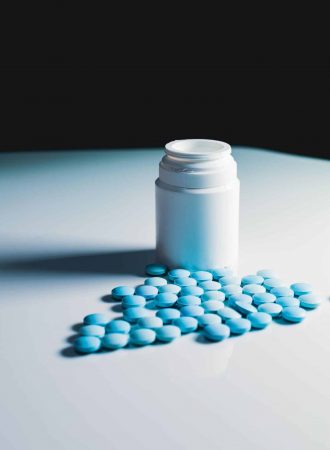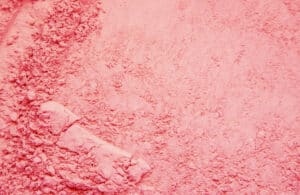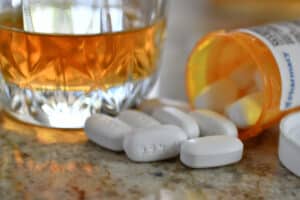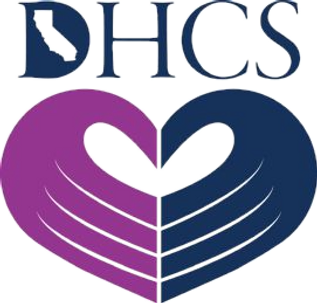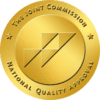Blues Drugs Overview
Blues drugs, also known as “blueberries,” “M30s,” or simply “blues,” are a type of illicit street drug that has gained notoriety for its potent and dangerous effects. These drugs are typically small, blue-colored pills that often contain a mix of synthetic opioids, with fentanyl being a common and particularly hazardous component. Designed to mimic prescription medications like oxycodone, blues drugs are manufactured to resemble legitimate pharmaceutical products, making them especially deceptive and dangerous.
Composition and Potency
The primary ingredient in most blues drugs is fentanyl, a synthetic opioid that is 50 to 100 times more potent than morphine. This extreme potency significantly increases the risk of overdose, as even a tiny amount of fentanyl can be lethal. In addition to fentanyl, blues drugs may contain other substances, including various cutting agents that can add to their unpredictability and danger. Because these pills are produced illicitly, their exact composition can vary widely, making them even more hazardous to users.
Street Names and Identification
Blues drugs go by several street names, including “blueberries,” “M30s,” “Mexican Oxy,” and “Chinese Oxy.” The name “M30” comes from the imprint commonly found on these pills, which mimics the marking on genuine oxycodone tablets. The blue color and familiar markings are part of a deliberate strategy by drug dealers to market these pills as safer, legitimate pharmaceuticals. This branding tactic makes blues drugs more appealing, particularly to younger users who may be less aware of the risks.
Methods of Use
Blues drugs can be consumed in various ways, including swallowing, snorting, or injecting. Each method of ingestion carries its own set of risks:
- Swallowing: Users take the pills orally, similar to how they would take prescription medication. This method is common due to its ease and the delayed but sustained release of the drug’s effects.
- Snorting: Crushing the pills into a powder and snorting them allows for quicker absorption into the bloodstream through the nasal tissues, leading to a faster and more intense high.
- Injecting: Dissolving the crushed pills in liquid and injecting them directly into the bloodstream provides an immediate and powerful effect but also significantly increases the risk of overdose and infections.
Appeal and Addiction
Blues drugs are particularly appealing to users due to their potent effects and the relative ease of obtaining them compared to prescription medications. The intense euphoria produced by these drugs can quickly lead to physical and psychological dependence. The cycle of addiction is fueled by the powerful cravings and severe withdrawal symptoms associated with opioid use. As tolerance builds, users often require higher doses to achieve the same effects, further escalating the risk of overdose.
Dangers and Health Risks
The dangers of blues drugs are manifold. The high potency of fentanyl, combined with the unregulated nature of these pills, makes them extremely hazardous. Overdose is a significant risk, as users can easily consume a fatal dose without realizing it. Physical health risks include respiratory depression, heart problems, and severe infections, especially for those who inject the drugs. Mental health can also be severely impacted, with users experiencing depression, anxiety, and in some cases, psychosis.
The Connection Between Blues Drugs and the Opioid Crisis
Detox Programs
Detox programs are the first step in treating blues drug addiction. These programs help individuals safely withdraw from the drugs under medical supervision. Detoxification involves the gradual removal of the drug from the user’s system, often accompanied by medication to manage withdrawal symptoms. Medical supervision is crucial during this process, as withdrawal from opioids can be dangerous and potentially life-threatening. Detox programs provide a controlled environment where individuals can begin their recovery journey with the necessary medical support.
Rehabilitation Centers
Rehabilitation centers offer comprehensive treatment plans that address both the physical and psychological aspects of addiction, providing a path to recovery. These centers typically offer a range of services, including individual and group therapy, educational programs, and life skills training. The goal is to equip individuals with the tools they need to maintain sobriety and reintegrate into society. Rehabilitation centers also provide a supportive community where individuals can connect with others who are going through similar experiences, fostering a sense of belonging and encouragement.
Support Groups and Counseling
Support groups and counseling play a critical role in recovery, offering emotional support and practical advice for staying clean. Support groups, such as Narcotics Anonymous, provide a safe space for individuals to share their experiences and receive encouragement from others in recovery. Counseling, whether individual or group, helps individuals address the underlying issues that contribute to their addiction and develop coping strategies to prevent relapse. Ongoing support is essential for long-term recovery, helping individuals navigate the challenges they may face after completing formal treatment programs.
Overcome Addiction at
Safe and Sound Treatment
Blues drugs represent a significant and growing threat to public health. Understanding what they are, the dangers they pose, and the available treatment options is essential in combating this issue. By raising awareness and providing support, we can help those affected by blues drugs find a path to recovery. The fight against blues drug addiction requires a collective effort from individuals, families, communities, and policymakers. By working together, we can create a safer, healthier future for everyone.
If you or a loved one are struggling with a substance use disorder, get in touch with Safe and Sound Treatment to learn more about our addiction treatment programs.
FAQs
Blues drugs are blue-colored pills containing synthetic opioids, often including fentanyl, that mimic prescription opioids.
They are unregulated and often contain lethal doses of fentanyl, leading to a high risk of overdose and death.
Look for physical signs like drowsiness and constricted pupils, as well as behavioral changes such as secretive behavior and neglect of responsibilities.
Seek professional help immediately. Detox programs, rehabilitation centers, and support groups can provide the necessary treatment and support.
Yes, there are several effective treatments, including detox programs, rehabilitation centers, and ongoing counseling and support groups.
Blues drugs are known by several alternative names in various regions and among different user groups. Some of the most common street names for blues drugs include:
- Blueberries
- Blue Pills
- M30s
- Mexican Oxy
- Chinese Oxy
- Perks
- Roxies
